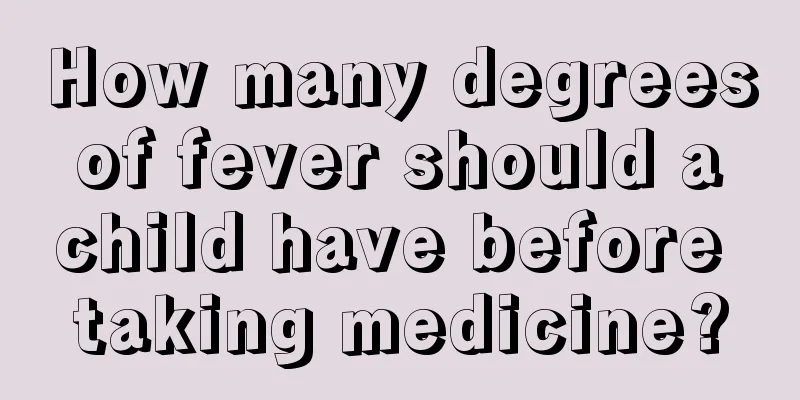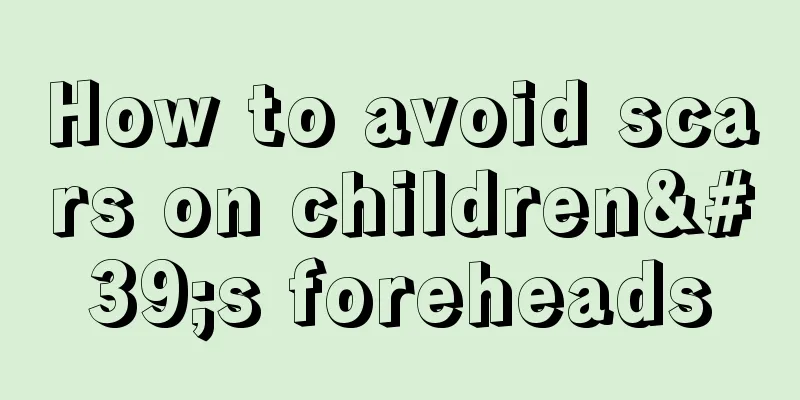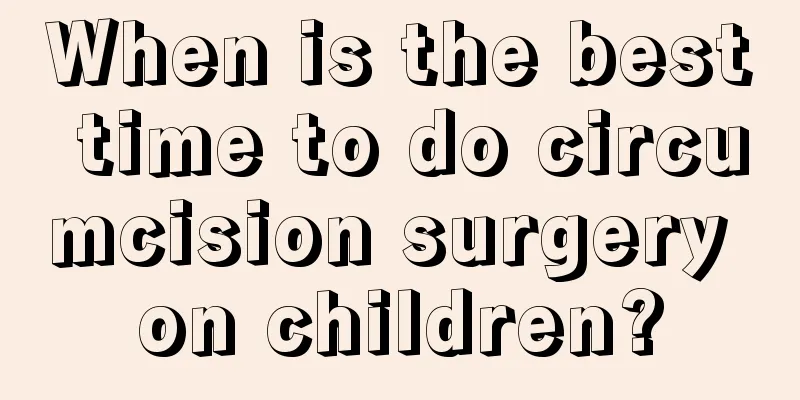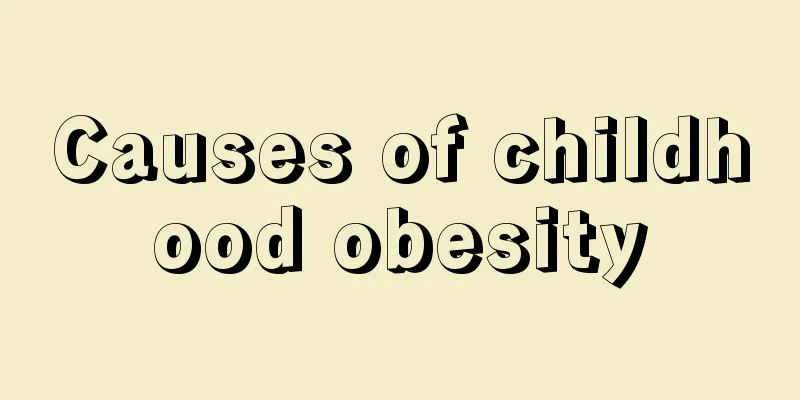How many degrees of fever should a child have before taking medicine?

|
Children have weaker resistance than us adults, so they are more likely to get sick. Fever is a common disease among children, and the specific temperature of the fever is not very stable. Whether a child has a high fever or a low fever, it cannot be ignored, because it will have a certain impact on the child's body. However, it does not mean that a child must take medicine when his body temperature is higher than normal. So, at what fever should a child take medicine? 1. Strictly speaking, it is not recommended to use medicine to reduce fever if the fever does not exceed 38.5 degrees. The main method of cooling down is physical, which is to use medical alcohol to repeatedly wipe the baby's armpits, groins of both thighs (inner thigh roots), and pulsation area of the large arteries in the neck. Do not wipe the baby's abdomen, especially the navel, otherwise it will cause cold diarrhea in the baby. When wiping the body, use an ice towel to cool the baby's forehead or let the baby rest his head under his pillow. If the baby's body temperature continues to rise during physical cooling, and reaches above 38.5 degrees, you can use medicine. However, parents should be reminded that fever is a manifestation of normal human immunity and a symbol of the body's struggle against foreign viruses and bacteria. We cannot simply reduce the temperature but must find the root cause of the fever. If the cause of the fever cannot be found, simply reducing the fever will not solve the problem. Once the effect of the antipyretic wears off, the fever will come back again. Therefore, if an unexplained high fever occurs, it is best to go to the hospital for appropriate examinations to determine the cause and solve the root cause of the fever in a targeted manner. 2. The normal basal body temperature of children is 36.9℃~37.5℃. Generally, when the body temperature exceeds the basal body temperature by more than 1°C, it is considered a fever. Among them, low fever refers to body temperature fluctuating around 38°C, and high fever refers to body temperature above 39°C. Continuous fever for more than two weeks is called long-term fever. If the temperature is below 38.5 degrees, do not take antipyretic medicine or get antipyretic injections, and let your baby drink plenty of water. If the fever is above 38.5 degrees, please ask a doctor immediately to confirm whether it is a viral infection or a bacterial infection. If it is a viral infection, use antiviral drugs (such as ribavirin); if it is a bacterial infection, use antibiotics (such as cephalosporins). Do not rush to reduce the fever. The fever is only a symptom and the cause of the disease must be found out. Pay attention to whether there is bacterial or viral infection. 3. Under normal circumstances, the baby's armpit temperature is 36~37 degrees. If the temperature exceeds 37 degrees, it is considered a fever. Let the baby drink more water. You can use physical cooling methods to wipe the palms and soles of the feet, and cover the baby's forehead with warm water. If the temperature exceeds 38.5 degrees, you need to take antipyretics. Although a child's fever is a normal physiological manifestation, we must also pay attention to it. If it is not very serious, we can solve it ourselves at home, but if the fever does not subside and requires treatment, we must communicate with the doctor in time to explain the situation. However, it is recommended to consult a doctor about when to take the medicine. |
<<: How to cut newborn baby's nails
>>: What is the cause of umbilical hernia in a two-month-old baby?
Recommend
What are the drugs for treating precocious puberty?
Precocious puberty is a common problem that usual...
Causes of gray hair in young children
As people age, their hair naturally turns white. ...
Children with chickenpox should pay attention to these matters
I believe everyone is familiar with chickenpox, b...
What happens if a child has itchy red bumps on his body?
Many people often have itchy skin, especially som...
What causes yellow skin in newborns?
Many newborns have yellow skin, so parents must p...
What are the massage methods for babies with cold and nasal congestion?
Many babies catch colds, which may cause nasal co...
Why doesn't my baby gain weight after eating?
As people's diet is getting better, many pare...
Nutritional recipes for 6-year-old babies: health is the most important
Nowadays, parents are actively concerned about th...
What are the symptoms of zinc deficiency in one-year-old children?
Children of different ages have different reactio...
Reasons why babies sweat all the time
Many parents find that their children often sweat...
What fruits are good for babies with anemia?
A baby's daily routine is to eat, sleep, and ...
How to care for the fontanelle of a newborn?
The fontanelle is extremely important for newborn...
What should I do if my child has heatstroke and fever? Multiple ways to solve
In comparison, children are more likely to suffer...
What are the symptoms of cerebral hemorrhage in children?
Cerebral hemorrhage in children is a relatively s...
What to do if your baby has a cough and runny nose
A baby is the future and hope of every parent. Es...









